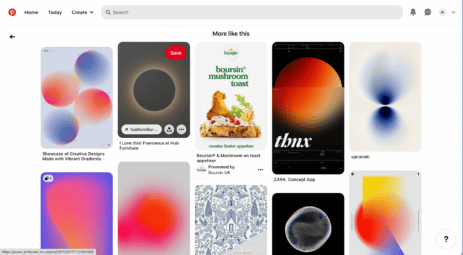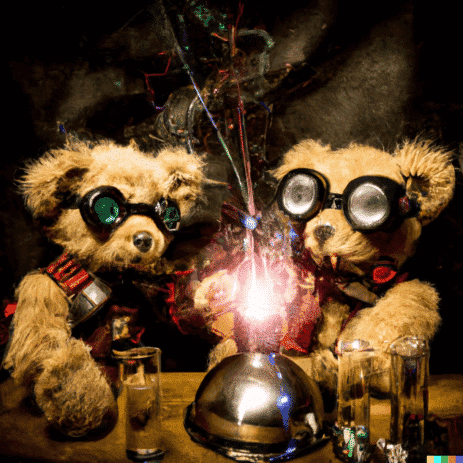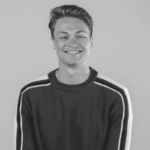New technologies are reshaping every aspect of our lives, and the creative economy is no different. From music to design, technology is pushing the boundaries of what’s creatively possible. However, every new technology has its drawbacks and barriers to overcome.
In this article, I will explore if new technologies help or hinder creativity and what value creatives bring in a world obsessed with what’s next.
To explore this topic, I will focus on 3 emerging technologies that are having an impact today and discuss the benefits and hindrances of each. I will caveat this and say that I only understand these as a layman and from the experience of working with them as a creative.
Tech and creativity: What do emerging technologies mean for creativity?
Firstly, what do I mean by creativity? For this article, when I refer to ‘creativity’ or ‘creatives,’ I mean recognized creative professions such as Advertising, Architects, Designers (including product, graphic, digital, and fashion), and Artists, who form a significant segment of the creative economy.
Technology 1 – the algorithm
Algorithms on social media, such as Instagram, Pinterest, or TikTok, define what content comes your way as an individual user on the platform. Depending on what content you have interacted with in the past, the algorithm adapts what content it shows you in the future.
Content-sharing platforms are now well-established as core elements of the creative process. And why not? The limitless information has brought far-away sources to our fingertips and ensured we work faster than ever before. But there’s a catch.
Today, more than ever, we’re being influenced by what we’re shown and not what we discover, directly due to the algorithm. Creatives find themselves inspired by stimuli pushed by algorithms that result in strikingly similar solutions. Going far beyond trends, we are seeing the replication of ideas, solutions, and executions with little interrogation or exploration of what they are.
These works are so easy to replicate because they align with our predefined likes and preferences, something the algorithm is all too aware of. In seeing these works, we often ‘jump the gun’ and create our version of what we’ve seen, assuming that it must be a good direction because someone else has done something similar. Unfortunately, this is often not the case. The reality is that much of the work we see is a minor evolution of someone else’s work.
This level of replication is becoming increasingly common. Where algorithms promise limitless inspiration, we have an echo chamber that limits our horizons. The algorithm’s hyper-personalization has led to confusion over what is relevant versus what is good.
For creatives, this has the potential to harm what is core to their offering to the economy. They have long been known as the people in the industry who have truly original ideas that are harder to come by. If originality is no longer part of the creative arsenal, do creatives risk playing a less prominent role in business?

Technology 2 – artificial intelligence
Creatives take pride in their creativity more than anything else. It’s long been this skill that allowed designers to play an increasingly influential role in business. Because of this, it is believed that creative roles will be the last to be affected by AI. However, recently we have been exposed to AI aimed directly at designers.
Take DALL-E 2 as an example. It is an AI that can generate realistic images from a description in natural language. It’s a tool that has captured the attention of designers, not least because it infringes on much of their core skill set. Designers, who are innately visual, spend much time crafting beautiful graphics, renders, and images. This has resulted in nervousness from an industry that once thought they were safe from the technological changes around them. But should they be worried?
AI technology is ultimately only as good as the data going into it. The limits in how we collate data have led to AI design tools being highly specialized in what they produce. Where they prove to be extremely valuable and efficient in some cases, there are limits to what they can do.
For creatives, this poses an interesting challenge. Do you compete with AI by continuing to craft skills that you have spent much of your life developing, or do you embrace AI and hope that one day it will produce the standard of work you are accustomed to? Neither choice is ideal, but neither are they mutually exclusive. AI offers the opportunity to optimize how creatives work and free up headspace without learning unfriendly software. In contrast, creatives can explore new and innovative ways to leverage AI that takes it to the next level.

‘DALL-E 2 created this image in response to the text “teddy bears mixing sparkling chemicals as mad scientists in a steampunk style”’
Technology 3 – data analytics
Of all the emerging technologies, data will have the most profound effect on how creatives work. There is a common misconception that creativity and data are at odds with one another. There is an assumption that embracing one would hinder the other. In reality, there is massive potential for both sides to maximize the value of the other.
The presence of data allows us to gather new insights, and creativity is the process of leveraging imagination to create something new. Creativity is seen as a fast-paced and fluid topic, whereas data is seen as a structured and organized set of processes. Both are incredibly valuable but not necessarily compatible. Why is this?
On paper, these two disciplines should work hand in hand as they follow seamlessly from one another. The insights from data should form the inspiration creatives need. However, the reality is that these two worlds feel very distant, which is down to the cultural mindset of the people in each position.
If creatives can overcome their fear of data and the barriers it has, they can transform the industry in 3 ways:
- Problem identification
- It will enable us to see clearly. Data provides the objectivity necessary in a world that is becoming increasingly complex.
- Idea generation
- Data can identify intricate behavior patterns and can identify opportunity spaces that may remain unseen without it
- Concept validation
- Data modeling and simulation are valuable test ideas and break things down into more detail quickly, understanding nuances in human behavior at a level not seen before
From an output and process point of view, it makes sense to marry these two disciplines together. The potential value is huge, so long as creatives can get past the ‘uncool’ tag data that seems to have given itself.
So, what do emerging technologies mean for creativity?
As you may have noticed, there are pros and cons to each of the above, but if there is an overriding theme to these technologies, it’s that none of them provide a ubiquitous answer. Just like the tools that came before, they each occupy a niche in which they can be useful.
They are useful so long as we recognize the limits of the niche. Just because something is novel and completes a task with relentless efficiency doesn’t mean we should change our ways of thinking so that we can use it. There is always the temptation, but we must be honest about the value these tools provide us. Always ask ‘Why?’ we might need a tool rather than using it for the sake of it.
These tools can change creativity, both for better and worse. To ensure we fall on the right side, we need to ensure the technologies remain tools and don’t let the ‘How’ become the ‘Why.’





